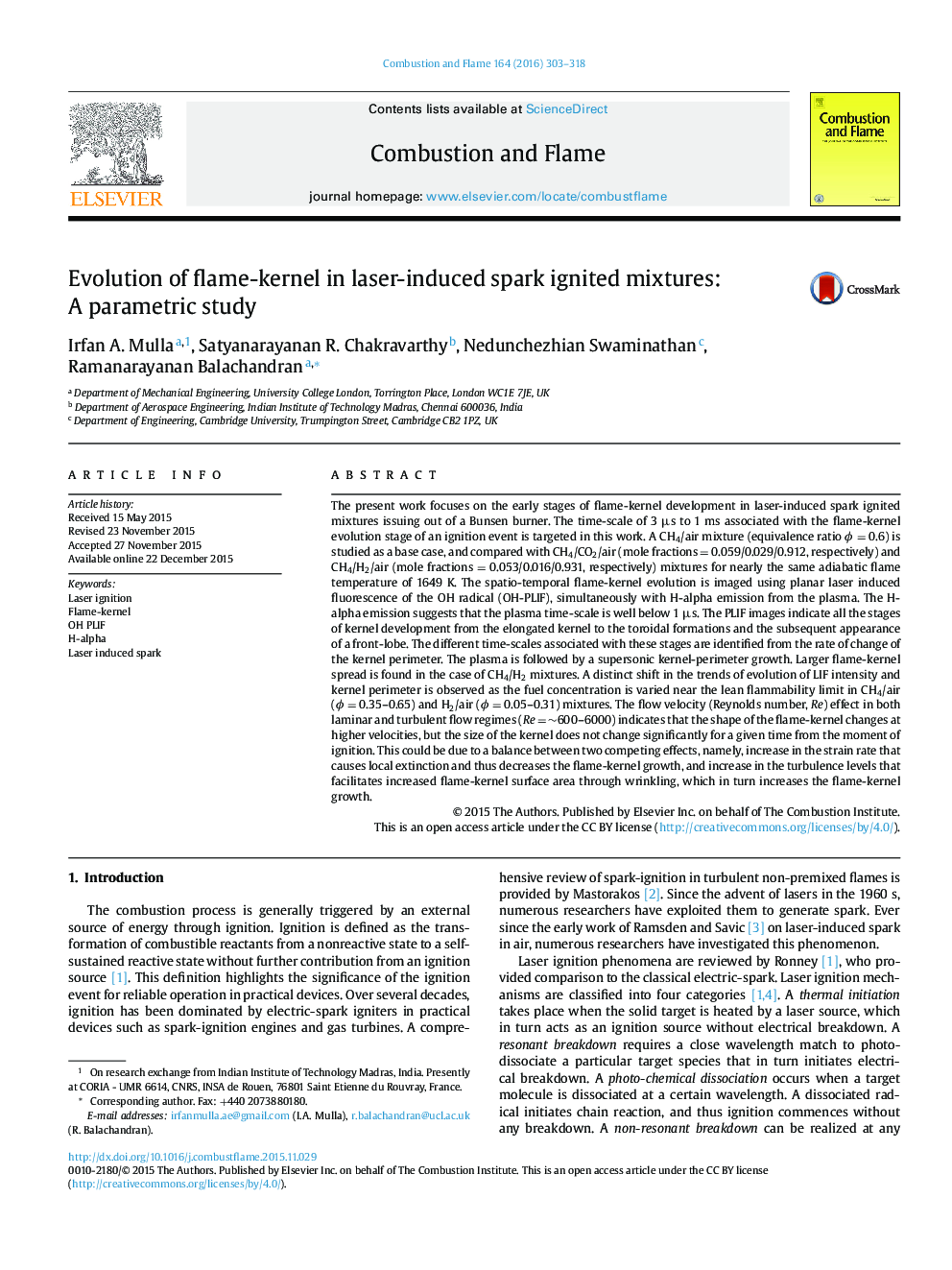| کد مقاله | کد نشریه | سال انتشار | مقاله انگلیسی | نسخه تمام متن |
|---|---|---|---|---|
| 6594315 | 458004 | 2016 | 16 صفحه PDF | دانلود رایگان |
عنوان انگلیسی مقاله ISI
Evolution of flame-kernel in laser-induced spark ignited mixtures: AÂ parametric study
دانلود مقاله + سفارش ترجمه
دانلود مقاله ISI انگلیسی
رایگان برای ایرانیان
کلمات کلیدی
موضوعات مرتبط
مهندسی و علوم پایه
مهندسی شیمی
مهندسی شیمی (عمومی)
پیش نمایش صفحه اول مقاله

چکیده انگلیسی
The present work focuses on the early stages of flame-kernel development in laser-induced spark ignited mixtures issuing out of a Bunsen burner. The time-scale of 3 µs to 1 ms associated with the flame-kernel evolution stage of an ignition event is targeted in this work. A CH4/air mixture (equivalence ratio Ï = 0.6) is studied as a base case, and compared with CH4/CO2/air (mole fractions = 0.059/0.029/0.912, respectively) and CH4/H2/air (mole fractions = 0.053/0.016/0.931, respectively) mixtures for nearly the same adiabatic flame temperature of 1649 K. The spatio-temporal flame-kernel evolution is imaged using planar laser induced fluorescence of the OH radical (OH-PLIF), simultaneously with H-alpha emission from the plasma. The H-alpha emission suggests that the plasma time-scale is well below 1 µs. The PLIF images indicate all the stages of kernel development from the elongated kernel to the toroidal formations and the subsequent appearance of a front-lobe. The different time-scales associated with these stages are identified from the rate of change of the kernel perimeter. The plasma is followed by a supersonic kernel-perimeter growth. Larger flame-kernel spread is found in the case of CH4/H2 mixtures. A distinct shift in the trends of evolution of LIF intensity and kernel perimeter is observed as the fuel concentration is varied near the lean flammability limit in CH4/air (Ï = 0.35-0.65) and H2/air (Ï = 0.05-0.31) mixtures. The flow velocity (Reynolds number, Re) effect in both laminar and turbulent flow regimes (Re = â¼600-6000) indicates that the shape of the flame-kernel changes at higher velocities, but the size of the kernel does not change significantly for a given time from the moment of ignition. This could be due to a balance between two competing effects, namely, increase in the strain rate that causes local extinction and thus decreases the flame-kernel growth, and increase in the turbulence levels that facilitates increased flame-kernel surface area through wrinkling, which in turn increases the flame-kernel growth.
ناشر
Database: Elsevier - ScienceDirect (ساینس دایرکت)
Journal: Combustion and Flame - Volume 164, February 2016, Pages 303-318
Journal: Combustion and Flame - Volume 164, February 2016, Pages 303-318
نویسندگان
Irfan A. Mulla, Satyanarayanan R. Chakravarthy, Nedunchezhian Swaminathan, Ramanarayanan Balachandran,